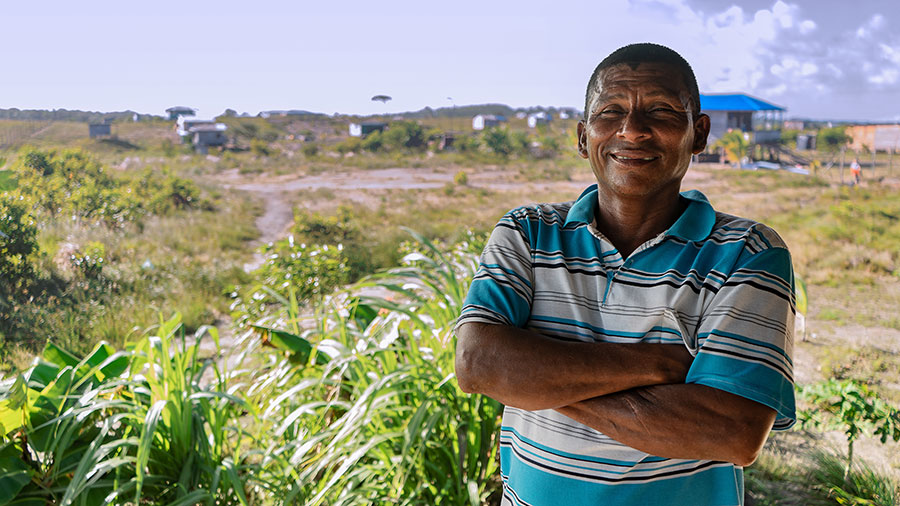Unlocking trust: Part 1
Uncovering bias in stakeholder mapping

More than a diagram or list of names, a stakeholder map reveals the intricate web of relationships, motivations, and lived experiences that shape a community’s interaction with a project. When implemented effectively, it clarifies social dynamics, influential political undercurrents, and community cohesion from the earliest planning stages and keeps stakeholders in alignment.
But projects exist within dynamic frameworks. Complex infrastructure, energy, and mining projects converge with established social realities rooted in lived experiences, and it’s critical to have a firm foundation.
To do this, we need to meet communities where they’re at. We must root ourselves, as experts in our fields, in a shared interpretation of social reality.
Four principles that unlock the full potential of stakeholder mapping
Distinguish stakeholder identification from risk analysis.Too often, these steps are blurred. Identifying stakeholders is about understanding the social actors—their roles, networks, and interactions. Risk analysis, by contrast, builds on this understanding to assess potential disruptions or opportunities. Without a thorough map of stakeholders, risk assessment becomes guesswork. Clarity here leads to precision downstream.
Ask the right questions at the right timeField interviews are not checkbox exercises. They require curiosity, empathy, and adaptability. Start with broader conversations to orient yourself in the context, then engage key stakeholders with focused, evolving questions. Listening—truly listening—uncovers motivations, tensions, and the underlying drivers of behavior. This adaptive approach lays the groundwork for meaningful engagement.

Profiles aren’t snapshots; they’re narratives in progress. This requires synthesizing insights across multiple interactions, noting changes in discourse, alliances, and influence. Key variables—such as mobilization capacity, convening power, political affiliations, or even elements of personal history—form the backbone of these profiles. This evolving understanding strengthens scenario planning and enhances strategic foresight.
Understand motivations and monitor their evolution.Stakeholders aren’t static. Their motivations—rational, emotional, collective, individual—shift in response to events, discourse, and perceptions. Monitoring these changes requires vigilance and structured tools: ongoing interviews, media analysis, and direct observation. Doing so enables proactive engagement and adaptive strategy, keeping projects resilient amid shifting social landscapes.
A stakeholder map isn’t a formality—it’s strategic insight
A rigorously maintained stakeholder map helps teams align strategies with the evolving context. It enables decision-makers to anticipate risks, adapt to shifting alliances, and leverage opportunities that may otherwise remain unseen.
But to harness this tool effectively, we must approach it with both discipline and sensitivity. This requires integrating insights from both management practice and social science:
- From a management perspective, stakeholder engagement extends beyond the shareholder paradigm, encompassing a broader ecosystem of interests. Ethical decision-making and inclusive practices are essential to build legitimacy and social license.
- From a social sciences perspective, the landscape is shaped by new social movements, the reassertion of human rights, the urgency of climate change, and evolving narratives of identity and belonging. Emotions, once peripheral in socio-political analysis, are now central to understanding motivations and alliances.
These insights converge in the stakeholder map, revealing not only who is involved but how they think, feel, and act—and why.

Rethinking knowledge as a pathway to action
To influence how communities perceive and interact with a project, we must first understand the context—its social, political, and emotional contours. This understanding isn’t a luxury; it’s a necessity for projects aiming to create economic value with lasting social impact.
At Hatch, we believe in moving beyond business objectives. Our approach integrates deep technical expertise with social insight, empowering communities to thrive alongside projects. Contact us to learn how we’re partnering with clients to prepare a roadmap that enables shared prosperity and resilience, and stay tuned for Part 2 of the Unlocking Trust series.
----
This series is more than a methodology—it’s a commitment to leave a legacy that endures. A legacy built not just on physical infrastructure, but on stronger, more resilient communities.
Part 1 launches our exploration into the practices, tools, and strategies that navigate the complex realities of our projects, while engaging with the broader social challenges we all face today.
